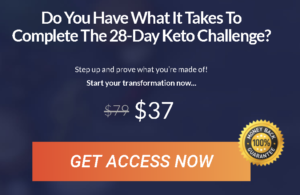Epsom salt detox baths are not popular or common, but they should be! As our modern agriculture is stripping the land of minerals, our diets are becoming more and more magnesium deficient. However, magnesium is an essential element for virtually all of our body’s functions.
It is just as necessary as water!
Epsom salt baths can help supply your body with magnesium as it absorbs through your skin.
Benefits of An Epsom Salt Detox
Magnesium absorption is the main benefit of an Epsom salt bath. There aren’t many studies that confirm this, but a 2004 study examined 19 participants. It found increased levels of magnesium and sulfate in the blood after the baths
- Improves Sleep – High magnesium levels are essential for sleep. This is due to the fact that magnesium helps your brain to produce neurotransmitters which induce sleep. Epsom salt baths have a calming and relaxing effect.
- Reduces Stress – Magnesium helps to produce the neurotransmitters needed for stress reduction.
- Eliminates Constipation – Magnesium is commonly used to treat constipation. It will draw water into the colon and promote bowel movements.
- Improved Exercise Recovery – Epsom salt has been known to improve muscle soreness and relieve cramps.
- Better Exercise Performance – Magnesium helps your body use glucose and lactic acid. This can help your exercise performance because your body will be efficiently using fuel and not building up lactic acid to cause muscle soreness.
- Reduced Pain and Swelling – Epsom salt baths have been known to reduce pain and swelling. Many individuals have reported symptom improvement with arthritis as well. This could be due to the fact that these people are often deficient in magnesium.
- Fibromyalgia Relief – A study conducted by the Journal of Integrated medicine concluded that applying magnesium chloride to the skin can help reduce symptoms of Fibromyalgia.
- Cholesterol Levels – A high magnesium diet or supplementation can improve HDL levels.
Whether you simply want to relax or are looking to prevent sore muscles, epsom salt baths can help. They will gently increase your magnesium levels in an enjoyable bath. The right temperature water can help you calm down and prepare for a great night’s rest.
How To Create an Epsom Salt Detox Bath
Epsom salt detox baths are simple to set up. You’ll need about 2 cups of Epsom salt for a standard-sized bathtub and warm water (do not exceed 102 degrees Fahrenheit).
Pour the Epsom salt under the water spout of the tub. This will ensure that the salts dissove faster and mix into the bath. The water mixture will feel a bit silky.
Soak in the bath water for at least 12 minutes. To relieve constipation, soak for at least twenty minutes.
If you want to add some aromatherapy benefits, you can use essential oils with the bath. Add in a few drops of lavender, peppermint or tea tree oil to the bath.
Side note: You may want to avoid using epsom salt in baths with jetted tubs unless the manufacturer has said that it is okay. The clean up may be very difficult.
Risks with Epsom Salt Detox Baths
Epsom Salt baths are relatively safe. However, if you have a health condition, you may want to check with your doctor. The risks are very low, but precautions should be taken for infants, children and pregnant women.
Pregnant women, children and individuals with kidney function should not take oral magnesium. Poorly functioning kidneys may not be able to eliminate excess magnesium. This can put an individual at risk for serious complications.
The side effects of an oral magnesium overdose include:
- dizziness
- fainting
- breathing problems
- increased urination
- slow heartbeat
- lethargy
- blurred vision
- muscle weakness
These side effects are rare in people with normal kidney function. It is unlikely that an epsom salt bath will trigger these symptoms of excess magnesium, but it is good to be aware of them.
Conclusion
Magnesium deficiency is associated with structural and functional abnormalities of cells, organs and systems in the body. The changes that are caused by magnesium deficiency depend upon its extent and duration.
Epsom salt baths are a great way to increase your magnesium levels and prevent diseases that are caused by magnesium deficiency.
[easyazon_infoblock align=”left” cart=”n” identifier=”B07NJPMVG9″ locale=”US” tag=”mcurle08-20″][easyazon_image align=”none” cart=”n” height=”500″ identifier=”1535168056″ locale=”US” src=”https://images-na.ssl-images-amazon.com/images/I/51SrsY5KNtL.jpg” tag=”mcurle08-20″ width=”333″]




























